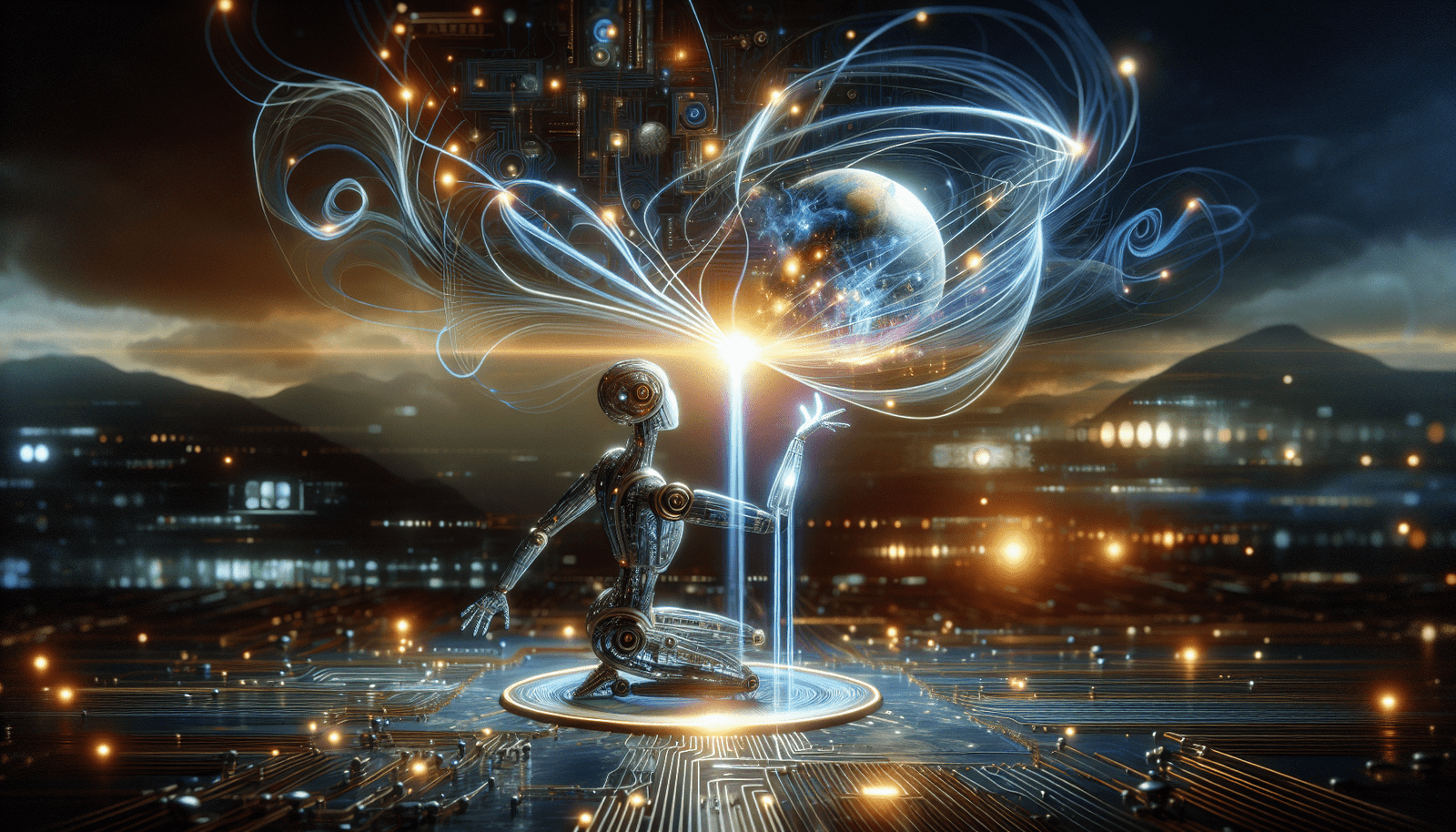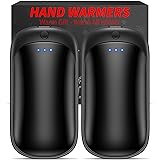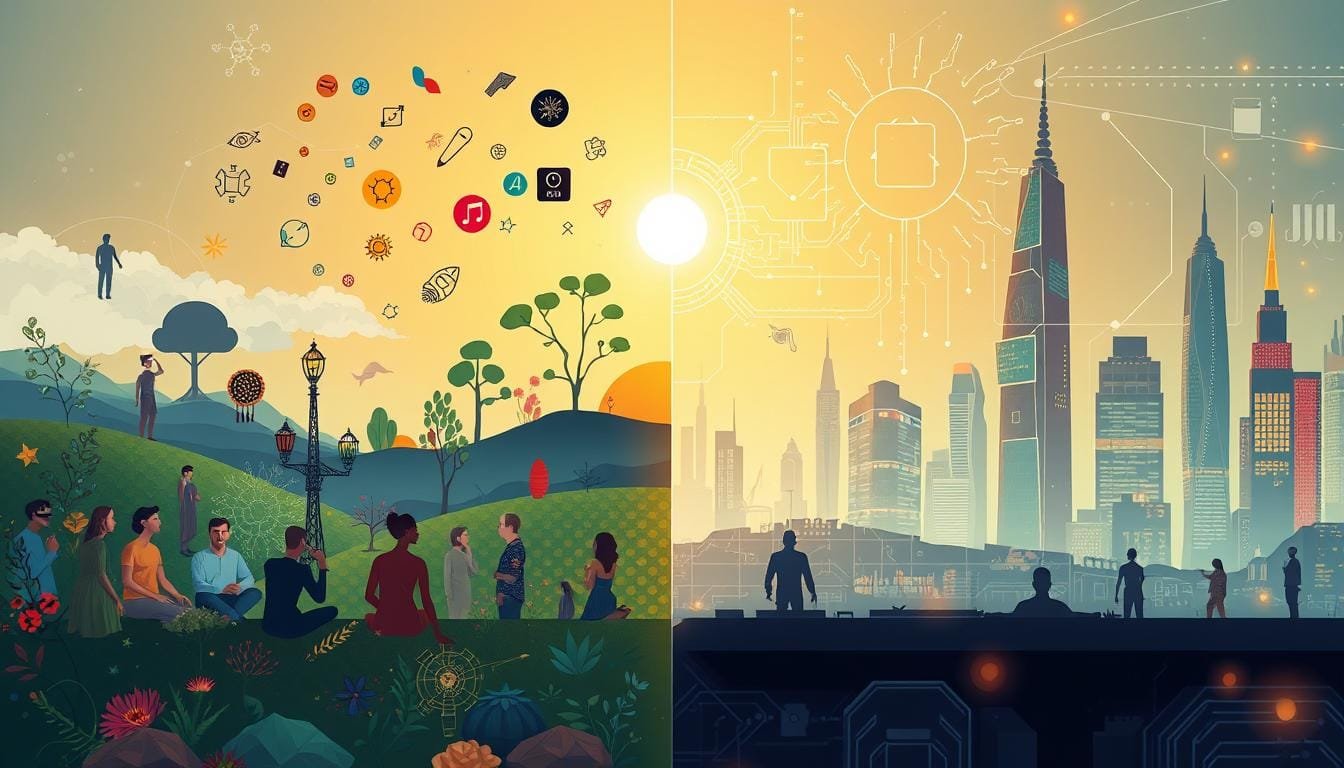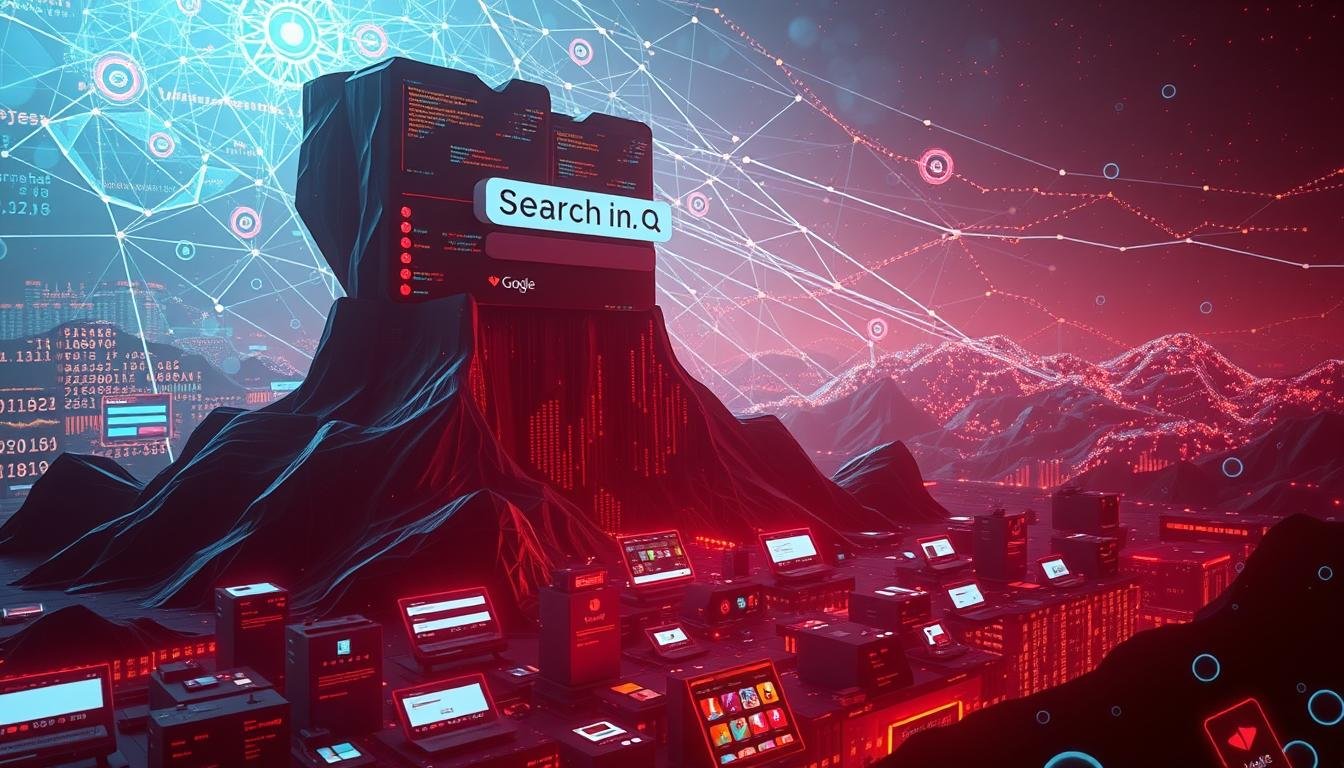Table of Contents
Introduction
Are you curious about how to leverage AI-generated images to generate income? Look no further! In this article, we will explore seven innovative ways to make money with AI-generated images. From selling personalized artwork to licensing images for commercial use, these strategies offer a range of opportunities for individuals and businesses alike to tap into the potential of AI-generated images and turn them into profitable ventures.
Whether you’re a creative artist or an aspiring entrepreneur, this article will provide you with practical insights on how to capitalize on this exciting emerging field. So, let’s dive in and discover the vast possibilities of making money with AI-generated images!
Sell AI-generated images on stock photo platforms
If you have a knack for creating stunning AI-generated images, why not monetize your talent by selling them on stock photo platforms? These platforms provide a convenient and accessible way for photographers, designers, and artists to showcase and sell their work to a wide audience. By following a few simple steps, you can start profiting from your AI-generated images in no time.
Choose a stock photo platform
The first step in selling your AI-generated images is to choose a stock photo platform that aligns with your goals and target audience. Some popular platforms include Shutterstock, Adobe Stock, and Getty Images. Research the features, pricing, and community of each platform to find the best fit for your needs.
Create a portfolio of AI-generated images
To attract potential buyers and showcase your skills, it’s essential to create a portfolio of high-quality AI-generated images. Focus on creating a diverse range of images that cater to different themes, styles, and industries. This will help you appeal to a wider audience and increase your chances of making sales.
Upload and list your images
Once you have an impressive collection of AI-generated images, it’s time to upload and list them on your chosen stock photo platform. Take the time to carefully categorize and tag each image to optimize its discoverability. Adding relevant keywords and descriptions will make it easier for buyers to find your images when searching for specific content.
Optimize your listings for better visibility
To improve the visibility of your AI-generated images and attract more potential buyers, it’s important to optimize your listings. This can be done by carefully selecting appropriate categories, tags, and keywords that accurately describe your images. Additionally, ensure that your images meet the platform’s technical requirements and are of the highest possible resolution.
Promote your portfolio to attract buyers
While listing your AI-generated images on stock photo platforms is a great way to reach potential buyers, it’s also important to actively promote your portfolio to maximize your sales. Share your work on social media platforms like Instagram, Twitter, and Facebook to showcase your talent and attract a following. Engage with your audience, participate in relevant communities, and leverage hashtags to increase visibility.
Set competitive prices
When it comes to setting prices for your AI-generated images, it’s crucial to strike a balance between profitability and competitiveness. Research similar images and their pricing on the stock photo platform to determine a fair and competitive price. Consider factors such as image complexity, uniqueness, and demand when making pricing decisions.
Monitor sales and make adjustments
Once your AI-generated images are listed and selling, it’s important to continuously monitor your sales and make adjustments as needed. Keep track of which images are performing well and which ones aren’t selling as expected. Use this data to refine your future creations and make informed decisions about your portfolio. Stay up-to-date with industry trends and adapt your offerings to meet the changing demands of buyers.
Create and sell customized AI-generated artwork
Another lucrative way to make money with AI-generated images is by offering customized artwork to clients. This personalized approach allows you to cater to the unique needs and preferences of individual buyers, creating a more intimate and engaging experience.
Identify target customers
To successfully sell customized AI-generated artwork, it’s important to identify your target customers. Determine which industries, niches, or individuals are most likely to desire personalized artwork. This could range from individuals looking to decorate their homes to businesses in need of custom visuals for their marketing campaigns.
Offer personalized AI-generated artwork
Once you have a clear understanding of your target customers, start offering personalized AI-generated artwork tailored to their specific requirements. This could include creating custom portraits, illustrations, or designs that reflect the buyer’s preferences, interests, or branding.
Promote your services through social media and online platforms
To attract clients for your customized AI-generated artwork, leverage the power of social media and online platforms. Create a strong online presence by sharing examples of your work, success stories, and testimonials from satisfied clients. Engage with relevant communities, join art-related groups, and participate in discussions to establish yourself as an expert in your field.
Collaborate with influencers or celebrities
To increase your reach and visibility, consider collaborating with influencers or celebrities who align with your target audience. By providing them with personalized AI-generated artwork, you can gain exposure to their followers and potentially attract new clients. This collaboration can be mutually beneficial, as influencers and celebrities often seek unique and personalized content.
Set pricing based on artwork complexity and customization level
When pricing your customized AI-generated artwork, consider the level of complexity and customization required for each project. More intricate designs or highly personalized pieces may warrant a higher price tag. Conduct market research to understand current pricing trends and ensure that your prices are competitive yet profitable.
Deliver high-quality digital or physical copies
Once a client has commissioned customized AI-generated artwork, it’s crucial to deliver high-quality digital or physical copies. Ensure that the final artwork meets or exceeds the client’s expectations in terms of resolution, format, and print quality. Pay attention to details like color accuracy and overall aesthetics to provide a premium product.
Offer exclusive or limited edition artwork
To create a sense of scarcity and exclusivity, consider offering exclusive or limited edition AI-generated artwork. This can be achieved by limiting the number of reproductions or by creating one-of-a-kind pieces. Buyers often value rare and unique pieces, which can lead to higher demand and potentially higher prices.

Develop AI-generated images for advertising campaigns
The advertising industry presents a vast opportunity to leverage AI-generated images. By developing images tailored to advertising needs, you can cater to the visual demands of brands and marketing agencies.
Research target market and industry trends
Before diving into creating AI-generated images for advertising campaigns, it’s crucial to research the target market and industry trends. Understand the preferences, styles, and aesthetics that resonate with the intended audience. Stay updated with the latest advertising trends, techniques, and visual storytelling strategies to ensure your images align with the ever-changing landscape.
Create AI-generated images tailored to advertising needs
Once you have a clear understanding of the target market and industry trends, begin creating AI-generated images tailored to advertising needs. Focus on creating visuals that effectively communicate the desired message, evoke emotions, and capture attention. Customize the images to reflect the brand identity, campaign objectives, and target audience.
Offer customization options for clients
To cater to the specific requirements of advertising clients, offer customization options for your AI-generated images. This could include customizing colors, images, text, or even incorporating branding elements. Providing flexibility and options for customization can significantly increase the appeal of your offerings and attract more clients.
Collaborate with marketing agencies or brands
To expand your reach and increase your chances of securing advertising campaigns, collaborate with marketing agencies or directly with brands. Reach out to potential clients and showcase your expertise in creating AI-generated images that align with their brand and campaign objectives. Collaborating with established agencies or well-known brands can provide you with valuable exposure and credibility.
Deliver high-resolution images for print or digital use
When developing AI-generated images for advertising campaigns, it’s essential to deliver high-resolution images that meet the requirements for print or digital use. Understand the desired output formats and resolutions for different advertising channels, such as billboards, websites, or social media platforms. High-quality visuals will ensure that your images maintain their impact and clarity across various mediums.
Provide options for variations and iterations
Advertising campaigns often require multiple visuals for different purposes, such as A/B testing or targeting different audience segments. Provide options for variations and iterations of your AI-generated images to accommodate these needs. This flexibility can enhance your value proposition and increase the likelihood of securing repeat business.
Ensure legal compliance with copyright and licensing
When creating AI-generated images for advertising campaigns, it’s important to ensure legal compliance with copyright and licensing regulations. Understand the rights and permissions associated with any elements used in your images, such as stock photos or fonts. This will safeguard your work from potential legal issues and protect the interests of your clients.
License AI-generated images to publishers and media outlets
Publishers and media outlets are constantly in need of captivating and attention-grabbing visuals. By licensing your AI-generated images to these entities, you can tap into a profitable market and gain exposure for your work.
Identify potential publishers and media outlets
Before licensing your AI-generated images, conduct thorough research to identify potential publishers and media outlets that align with your work. Consider the types of publications, platforms, or websites that could benefit from using AI-generated images. This could include magazines, newspapers, online blogs, and digital media platforms.
Create a diverse collection of AI-generated images
To maximize your chances of licensing your AI-generated images to publishers and media outlets, create a diverse collection that covers various themes, subjects, and styles. This will enable you to cater to a wide range of publishing needs and increase the appeal of your portfolio.
Offer different licensing options (e.g., exclusive, non-exclusive)
When licensing your AI-generated images, provide different options to accommodate the varying requirements and budgets of potential clients. This could include offering both exclusive and non-exclusive licensing agreements. Exclusive licenses grant sole usage rights to the client, while non-exclusive licenses allow multiple clients to use the same image.
Establish fair pricing based on usage and reach
Pricing your AI-generated images for licensing can be a complex task. Consider factors such as the intended usage, reach, and duration of the license. Higher usage or broader reach may warrant higher prices. Conduct market research and analyze industry standards to determine fair and competitive pricing.
Provide high-resolution images in various formats
To meet the diverse needs of publishers and media outlets, ensure that your AI-generated images are available in high resolution and in various formats. This will make it easier for clients to incorporate your images into their publications or platforms without compromising quality.
Create a user-friendly licensing agreement
When licensing your AI-generated images, it’s vital to create a user-friendly licensing agreement that clearly outlines the rights, restrictions, and usage terms. Ensure that the agreement is easily understandable and straightforward for potential clients. Seek legal advice if needed to protect your interests and clearly define the boundaries of usage.
Monitor usage and enforce copyright protection
Once your AI-generated images are licensed, it’s important to monitor their usage and enforce copyright protection. Regularly check for unauthorized usage or infringement and take appropriate action to protect your work. This may involve sending cease and desist letters or pursuing legal action against infringing parties.

Sell AI-generated images as digital assets
With the rise of digital marketplaces, selling AI-generated images as digital assets has become an increasingly popular way to monetize your creations. By leveraging the power of online platforms, you can access a global audience and reach buyers who are actively seeking digital assets for their creative projects.
Create a digital asset marketplace
To sell your AI-generated images as digital assets, consider creating your own digital asset marketplace. This will provide you with full control over the selling process, including pricing, promotion, and user experience. Alternatively, you can leverage existing digital marketplaces that specialize in selling digital assets, such as Creative Market or Envato.
Build a community of AI artists and buyers
To build a successful digital asset marketplace, it’s important to foster a community of AI artists and buyers. Encourage collaboration, feedback, and knowledge sharing among artists to create a supportive environment. Engage with your customers, provide excellent customer service, and encourage them to share their experiences with others.
Ensure a secure and transparent platform
To instill trust in your digital asset marketplace, ensure that it is secure and transparent. Implement robust security measures to protect sensitive customer data and provide clear terms of service and privacy policies. Regularly communicate with your users, address their concerns, and maintain transparency throughout the buying and selling process.
Allow artists to upload and sell their AI-generated images
To attract a wide range of AI artists and their creations, allow artists to upload and sell their AI-generated images on your digital asset marketplace. Implement an easy-to-use uploading system that accommodates various file formats and provides clear guidelines for the submission process. Enable artists to set their pricing or establish a commission-based system.
Facilitate transactions and provide payment options
To create a seamless buying experience, facilitate transactions on your digital asset marketplace. Integrate secure payment gateways that support multiple payment options, such as credit cards, PayPal, or cryptocurrency. Streamline the purchasing process and provide clear instructions on how buyers can access and download their purchased AI-generated images.
Implement a rating and review system for quality control
Encourage transparency and quality control in your digital asset marketplace by implementing a rating and review system. This will allow buyers to leave feedback and ratings for the AI-generated images they purchase, helping other buyers make informed decisions. Regularly monitor and moderate reviews to ensure fairness and maintain a high standard of quality.
Promote the marketplace to attract buyers and sellers
To attract both buyers and sellers to your digital asset marketplace, actively promote your platform through various channels. Leverage social media platforms, content marketing, and targeted advertising campaigns to reach your target audience. Highlight the unique features and benefits of your marketplace to differentiate it from competitors and attract attention.
Offer AI-generated images as design templates
Designers and developers are constantly in search of high-quality design templates that can simplify their workflow and enhance their creations. By offering AI-generated images as design templates, you can tap into this market and provide valuable resources to professionals in various industries.
Identify target audience (e.g., graphic designers, web developers)
To effectively offer AI-generated images as design templates, it’s important to identify your target audience. Determine the types of professionals who are likely to benefit from using design templates, such as graphic designers, web developers, or marketers. This will help you tailor your offerings to their specific needs and expectations.
Create a library of AI-generated design templates
To appeal to a wide range of professionals, create a comprehensive library of AI-generated design templates. This could include templates for various design projects, such as logos, social media posts, website layouts, or presentations. Focus on providing high-quality templates that are visually appealing, easy to use, and customizable.
Categorize templates based on industry or design style
To enhance the browsing and searching experience for your target audience, categorize your AI-generated design templates based on industry or design style. This will enable professionals to easily find templates that match their specific requirements and preferences. Consider creating categories like modern, vintage, minimal, technology, or fashion, depending on the template themes.
Allow customization options for users
To provide flexibility and cater to individual preferences, allow users to customize the AI-generated design templates. This could include options to change colors, fonts, or layouts to match their branding or personal style. Offering customization options will add value to your templates and increase the likelihood of attracting more buyers.
Implement a licensing model (e.g., one-time purchase, subscription)
When offering AI-generated design templates, implement a licensing model that suits the needs of your target audience. This could include a one-time purchase model, where buyers pay a fixed price to access and use the templates indefinitely. Alternatively, you can offer a subscription-based model that provides access to a library of templates for a monthly or yearly fee.
Provide support and updates for templates
To ensure a positive user experience and maintain customer satisfaction, provide ongoing support and updates for your AI-generated design templates. Address any technical issues promptly, answer user inquiries, and provide detailed documentation or tutorials to guide users through the customization and utilization of the templates. Regularly update your templates with new features or design styles to keep them relevant and competitive.
Market the design templates on relevant platforms
To attract potential buyers for your AI-generated design templates, actively market them on relevant platforms. This could include showcasing your templates on design-related websites, forums, or blogs. Collaborate with influencers or industry experts who can vouch for the quality and usefulness of your templates. Leverage social media platforms and targeted advertising campaigns to reach your target audience effectively.

Collaborate with AI artists and designers
Collaboration can be an excellent way to leverage the skills and expertise of other AI artists and designers while expanding your reach and opportunities.
Build a network of AI artists and designers
To facilitate collaborations, start by building a network of AI artists and designers. Connect with fellow creatives through online communities, social media groups, or industry events. Engage in discussions, exchange knowledge and insights, and establish meaningful relationships with like-minded individuals in the AI art community.
Offer collaborative projects or commissions
Once you have established connections with AI artists and designers, offer collaborative projects or commissions to work together on unique and innovative creations. Collaborations can range from jointly creating AI-generated images, exploring new techniques, or combining different artistic styles. By pooling your talents, you can produce exceptional work that may attract more attention and opportunities.
Promote joint ventures or co-creation initiatives
To maximize the impact of your collaborations, promote joint ventures or co-creation initiatives. Share the process and progress of your collaborations through blog posts, videos, or social media updates. Highlight the strengths and synergy of the partnership to generate interest and attract potential clients or buyers.
Develop a revenue-sharing model
When collaborating with other AI artists and designers, it’s crucial to establish a revenue-sharing model that is fair and mutually beneficial. Determine how profits will be divided based on the contribution of each collaborator. This can be a fixed percentage or a customized arrangement depending on the nature of the collaboration.
Showcase the collaborations on social media or websites
To gain exposure and recognition for your collaborations, showcase the results on your social media platforms or websites. Share behind-the-scenes insights, explain the creative process, and highlight the combined talent and expertise of the collaborators. Encourage feedback and engagement from your audience to create a sense of excitement and curiosity.
Create a platform for artists to connect and collaborate
To foster collaboration within the AI art community, consider creating a dedicated platform or online community where artists can connect and collaborate. This could be a forum, a social media group, or even a website that facilitates networking and project coordination. Building such a platform can help artists find like-minded individuals, discover potential collaboration opportunities, and exchange knowledge and resources.
Provide resources and tools for AI art creation
To support the growth and success of AI artists and designers, provide resources and tools for AI art creation. Share tutorials, articles, or videos that cover different aspects of AI-generated imagery. Offer guidance on popular AI software, programming languages, or data sources commonly used in AI art creation. Empowering artists with the necessary knowledge and tools can expand their creative possibilities and improve their skills.
Create AI-generated images for virtual and augmented reality
Virtual and augmented reality (VR/AR) industries are experiencing significant growth and present unique opportunities for AI-generated images. By creating AI-generated images specifically tailored for these immersive experiences, you can tap into a niche market and cater to the visual needs of VR/AR developers and content creators.
Explore opportunities in virtual and augmented reality industries
Before diving into creating AI-generated images for VR/AR, explore the opportunities and trends within these industries. Familiarize yourself with the different applications of VR/AR, such as gaming, education, training, or marketing. Stay updated with the latest VR/AR technologies, platforms, and techniques to understand the visual demands and possibilities within this realm.
Develop AI-generated images for immersive experiences
Once you have a solid understanding of the VR/AR industries, start developing AI-generated images specifically tailored for immersive experiences. These images should be optimized to provide a realistic and visually captivating environment within the VR/AR space. Consider factors like lighting, depth, perspective, and interactivity to enhance the immersive experience.
Collaborate with VR/AR developers or content creators
To maximize the impact of your AI-generated images within the VR/AR industries, collaborate with VR/AR developers or content creators. Reach out to them, showcase your portfolio, and discuss potential collaborative projects or partnerships. By working directly with those who create VR/AR experiences, you can ensure that your AI-generated images meet their specific requirements and deliver the desired immersive effects.
Offer customization options for virtual environments
To cater to the needs of VR/AR developers and content creators, offer customization options for virtual environments. This could include providing modular components, textures, or objects that can be easily integrated into the virtual space. By offering assets that can be personalized and adapted to individual projects, you can increase the appeal and versatility of your AI-generated images.
Ensure high-quality and realistic visuals
When creating AI-generated images for VR/AR, it’s crucial to ensure high-quality and realistic visuals. As these experiences aim to immerse users in digital environments, the visuals need to be of the highest standard. Pay attention to details like texture resolution, lighting effects, and overall aesthetics to create an authentic and visually appealing experience.
Stay updated with VR/AR technology advancements
The VR/AR industry is constantly evolving, with new technologies, hardware, and software emerging regularly. Stay updated with these advancements to ensure that your AI-generated images remain compatible and optimized for the latest VR/AR platforms. This will enable you to meet the evolving needs and requirements of VR/AR developers and content creators.
Market the AI-generated images to VR/AR enthusiasts
To attract VR/AR enthusiasts and potential buyers for your AI-generated images, actively market your offerings to this specific audience. Create engaging and immersive visual content that demonstrates the potential of your AI-generated images within VR/AR environments. Showcase your work on VR/AR-specific platforms, forums, or communities to reach a receptive audience. Collaborate with influencers or thought leaders within the VR/AR industry to leverage their reach and expertise.

Conclusion
This article unveiled 7 innovative methods to unlock the financial potential of AI-generated images. From stock photos and advertising campaigns to customized artwork and VR/AR experiences, the possibilities are vast.
By exploring these strategies and tailoring them to your skills and interests, you can transform your passion for AI art into a sustainable source of income. Remember, the key lies in creativity, strategic planning, and a commitment to quality. So, unleash your artistic vision and embark on your journey to success in the exciting world of AI-generated art!
Frequently Asked Questions
What are the best platforms to sell AI-generated images?
Popular options include Shutterstock, Adobe Stock, Etsy, Redbubble, and specialized AI art marketplaces like Artbreeder.
Can I sell AI-generated art as NFTs?
Yes, NFT platforms like OpenSea and Rarible allow the selling of unique AI art pieces as NFTs.
How much can I earn selling AI-generated art?
Earnings vary depending on skill, platform, and strategy. Some artists earn a few dollars per image, while others achieve higher returns through collaborations or exclusive licenses.
Do I need artistic skills to make money with AI art?
While artistic skills are beneficial, understanding AI tools, prompts, and market trends is crucial for success.
Is it legal to sell AI-generated art?
Yes, but ensure you have the rights to any elements used (e.g., fonts, stock photos). Consider copyright and licensing terms carefully.
What are the ethical considerations of AI-generated art?
Be mindful of potential biases in AI algorithms and ensure your creations are respectful and avoid harmful stereotypes.
How can I improve the quality of my AI-generated images?
Experiment with different prompts, refine your editing skills and stay updated on new AI tools and techniques.
Can I use AI to create art for commercial purposes?
Yes, but licensing terms might differ. Ensure you have the appropriate license for commercial use.
How can I find clients for custom AI art commissions?
Build an online portfolio, network with potential clients, and leverage social media platforms to showcase your work.
What are some in-demand applications for AI-generated art?
Marketing materials, website design, product packaging, game development, and VR/AR experiences are just a few examples.
How can I stay updated on the latest trends in AI art?
Follow industry publications, join online communities, and attend relevant conferences or workshops.
Are there any legal risks associated with using AI art tools?
Always respect copyright and licensing terms. Be cautious of using AI tools that generate content with potential legal or ethical concerns.
What are some resources to learn more about AI art?
Check out websites like Artbreeder, Midjourney, and RunwayML for tutorials and community forums.
How can I collaborate with other AI artists?
Online communities like the AI Art Collective and the GANbreeder Discord server connect artists for collaboration and knowledge sharing.
Source Links
- Artbreeder: https://www.artbreeder.com/
- Midjourney: https://www.midjourney.com/
- RunwayML: https://runwayml.com/






